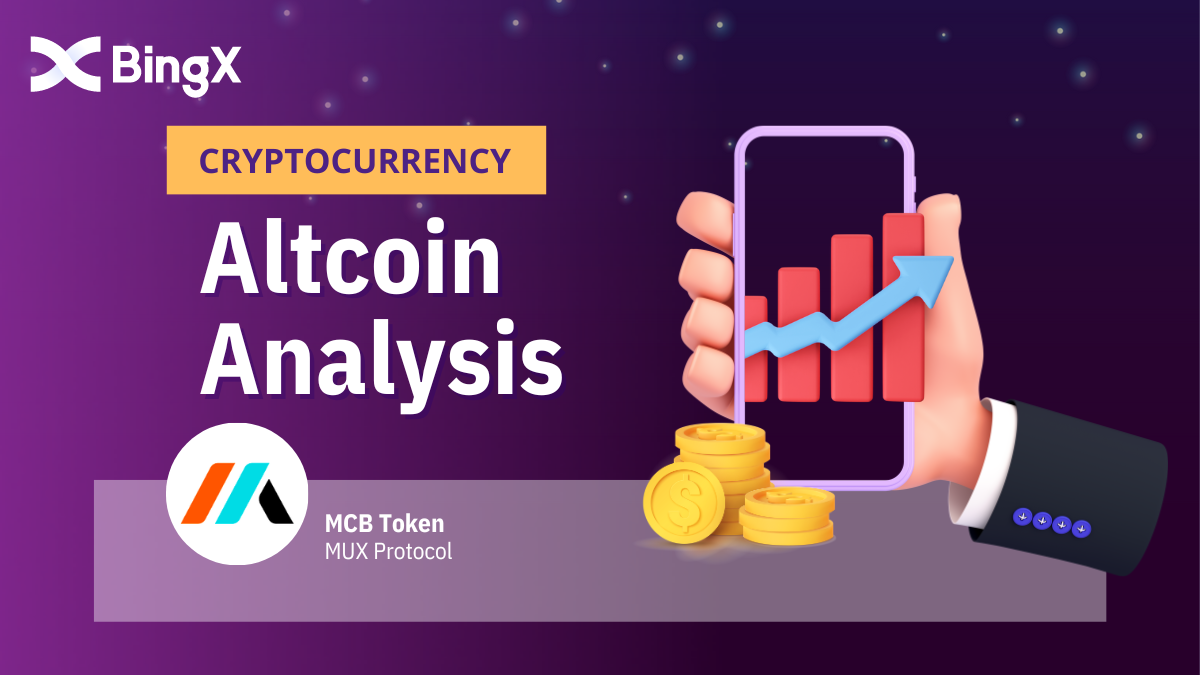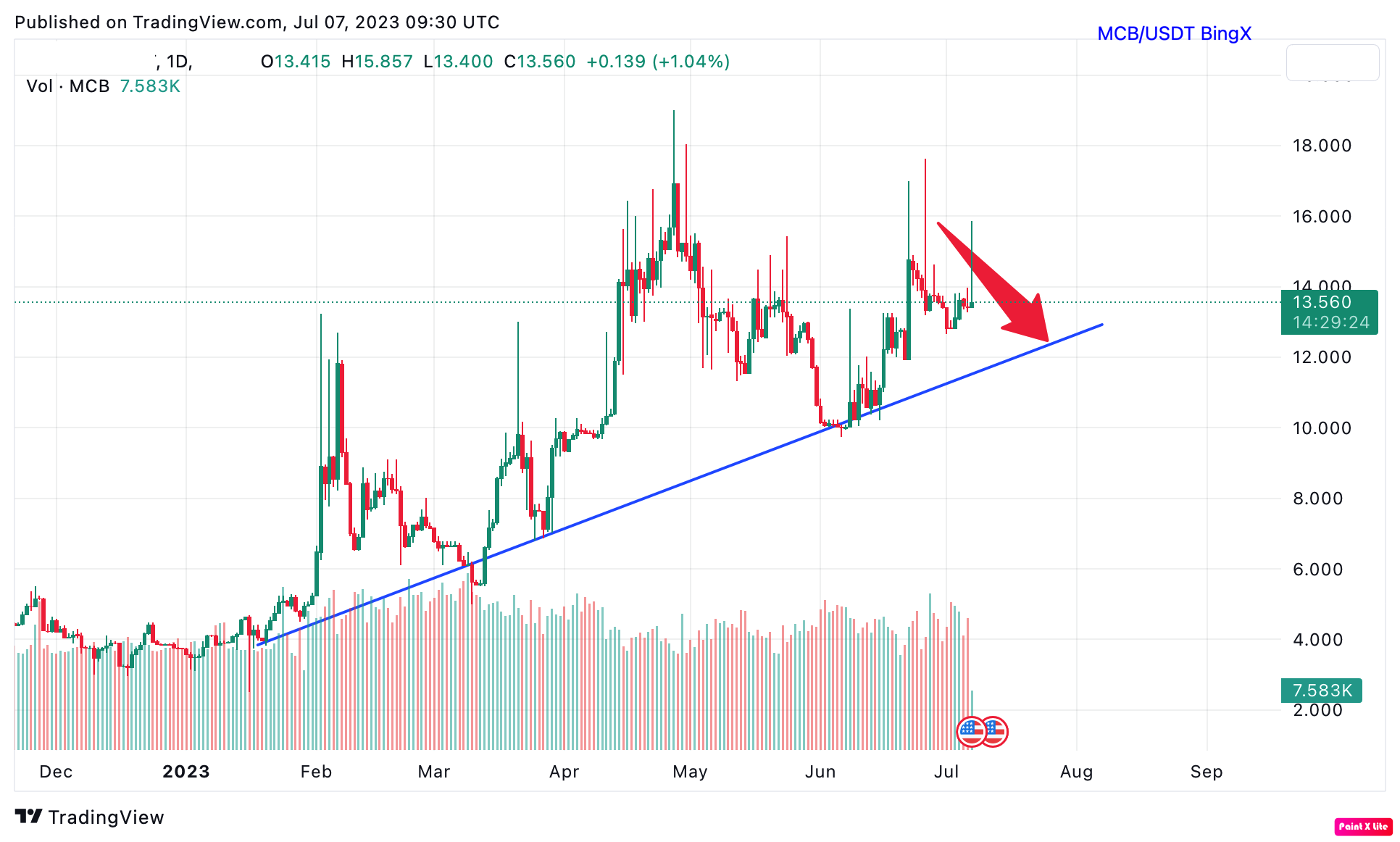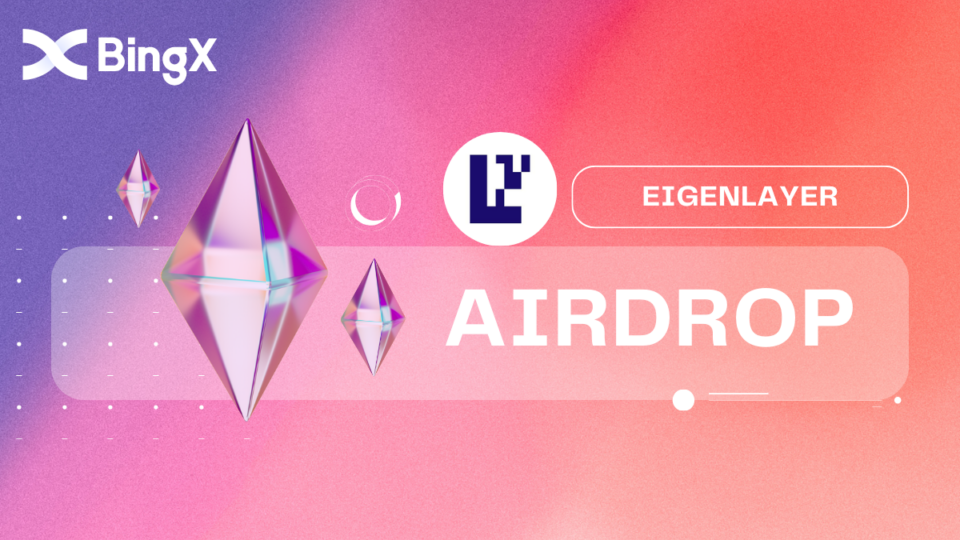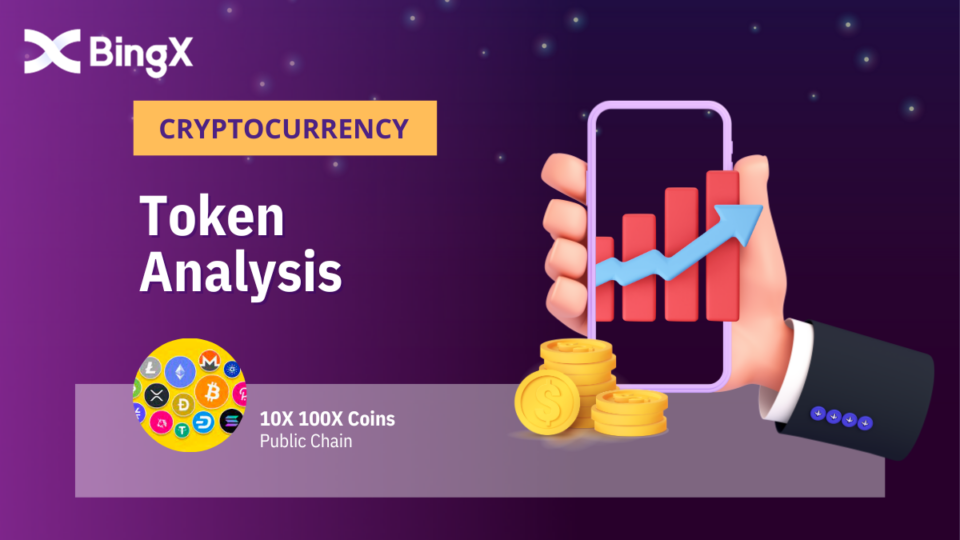
MetaMask Token Airdrop Guide: Earn $3000 FREE
July 6, 2023
What’s Arweave $AR Coin? How To Mine? Next 100X Token
July 11, 2023MUX Protocol Token $MCB Coin Price Prediction and Analysis

Table of Contents
1. MUX Contract Trading and MUX Protocol
MUX is an aggregation platform for decentralized perpetual contracts, and MUX Protocol is a decentralized aggregation protocol. Its main function is to retrieve order information from decentralized exchanges and allow users’ orders to be executed on the platform with the lowest price (MUX Whitebook, 2023).
Currently, MUX primarily aggregates order information from two platforms, GMX and GainsNetwork, supporting a total of 65 trading pairs, including foreign exchange. The $MCB token is the native token of the MUX platform, with a total supply of 10,000,000 MCB coins.
2. What’s The Investment Prospect of MCB Coin?
2.1 Issues and Prospects of Decentralized Exchanges
Decentralized exchanges (DEXs) and centralized exchanges (CEXs) differ significantly in terms of liquidity. Liquidity in DEXs is user-generated, allowing users to freely create or add liquidity. The fees for liquidity pools are typically determined by the platform, and users creating liquidity pools can choose their own fees. If multiple users create liquidity pools with the same fees, the fees are distributed proportionally among the liquidity providers (Malamud, 2017).
DEXs offer faster listing times, but due to transaction fees and on-chain gas fees, the cost for market takers is much higher compared to centralized exchanges. DEXs are more suitable for users with larger funds, while it may not be cost-effective for users with smaller funds to use DEXs (Xia, 2021).
Despite the high cost for market takers in DEXs, decentralized exchanges like Uniswap achieved a monthly trading volume of $70 billion in 2022, surpassing Coinbase’s 45%. The wealth effect brought by faster listing outweighs the transaction costs. Centralized exchanges monitor listings to reduce the risk of token purchases for users who only want to trade with $100, without any perception of the efforts made by centralized exchanges to mitigate their risks. Instead, they feel they missed the opportunity of turning $100 into $10,000 (Peduzzi, 2021).
If $100 can become $10,000, then a $30 transaction cost becomes insignificant. As a result, DEXs also have a large number of rug pull projects: users buy a bunch of worthless tokens, hoping they will rise 100 times the next day; the project team takes the ETH and leaves. Due to the lack of regulation, there are many rug pull projects, and many governments have prohibited users from trading on DEXs. However, because the exchanges are decentralized, users always find ways to trade, regardless of government warnings. The market is stimulated by every wealth effect and every story of turning $10,000 into $1 million overnight. This is the biggest problem of DEXs and a true reflection of human greed (Peduzzi, 2021).
Centralized exchanges face regulation, and the more regulated they are, the slower the listing process and the poorer the wealth effect. This gives more momentum to the development of DEXs. In the rapidly developing cryptocurrency market, users with only $100 in hand can engage in trading opportunities that can multiply their funds by 100. These users are not seeking to preserve value or avoid losses. They seek opportunities to get rich overnight, and only those who are not in need of money seek to preserve value (Xia, 2021).
However, regulation will eventually progress from warnings to banning DEXs. It’s just a matter of time. This is the same development process as the traditional banking system worldwide. Therefore, in the short term, token prices on DEXs may rise, but in the long run, it is not advisable to hold them (Shapiro, 2018).
2.2 The Prospect of Decentralized Contract Trading
From a technical perspective, decentralized contract trading has many issues. The biggest problem lies in the difference in liquidity provision. Liquidity in decentralized exchanges (DEXs) is provided by makers. A liquidity pool may face issues when makers decide to withdraw tokens from the pool, either because they are not making profits or due to rug pull concerns. As a result, the price of individual tokens may suddenly deviate from the market price, causing the contract price to disconnect. Therefore, DEX contracts can only support mainstream tokens and rely on liquidity pools with excellent market depth (Xia, 2021).
On the other hand, centralized contract trading in centralized exchanges (CEXs) can provide a wide variety of tokens as liquidity is provided by the exchange itself, which is backed by spot trading. This explains why GMX has a limited number of trading pairs and why MUX can only aggregate 65 trading pairs instead of the previously mentioned 90. This is a major bottleneck for DEX contract trading and cannot be easily resolved. Therefore, DEX contract trading is not favorably viewed in the long term as it requires specialized expertise, and the mechanisms of DEXs cannot guarantee the stability of contract trading.
In the short term, the price of MCB token may rise due to market regulation and the rise of Uniswap. However, in the long term, similar to GMX, MCB token is not highly regarded (Xia, 2021).
3. MCB Token Price Prediction

From the overall market perspective, MCB has experienced selling pressure in 2022 (due to the selling of airdropped tokens), and its price has reached a bottom. The price of MCB is heavily influenced by Bitcoin as the overall market lacks liquidity. Therefore, in the short term, the price of MCB token may experience a pullback in line with the movement of Bitcoin.
Bibliography
MUX Whitebook. (2023, 04). Retrieved from MUX: https://docs.mux.network/protocol/overview
Malamud , S. (2017). Decentralized Exchange. American Economic Review.
Peduzzi, G. (2021). Jack the Rippler: Arbitrage on the Decentralized Exchange of the XRP Ledger. IEEE.
Xia , P. (2021). Trade or Trick?: Detecting and Characterizing Scam Tokens on Uniswap Decentralized Exchange. ACM Journals.
Shapiro, D. C. (2018). 3 Taxation and Regulation in Decentralized Exchanges. Journal of Taxation of Investments.



